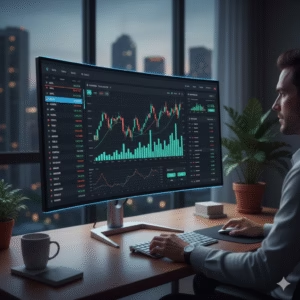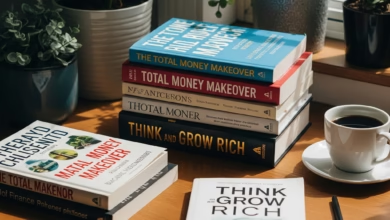What are Meme Stocks and why do they go viral?
Understand what Meme Stock is and how it works

The world of finance, once dominated by suits, algorithms, and fundamental analysis, has been radically reshaped by a new, unpredictable force: the retail investor mobilized by social media. At the center of this revolution is the phenomenon known as the Meme Stock. These are not your typical “blue chip” investments; they are shares of companies whose prices are driven less by traditional business metrics—like revenue, profit, or cash flow—and more by hype, internet virality, and collective online sentiment.
The emergence of meme stocks represents a historic intersection of technology, finance, and human psychology. It’s a compelling, often volatile, and undeniably high-stakes narrative that has captured the attention of everyone from Wall Street veterans to novice investors setting up their first brokerage account. Understanding what meme stocks are and, crucially, why they achieve viral status is essential for navigating the modern investment landscape and grasping the risks associated with this unique asset class.
Defining the Phenomenon: What Makes a Stock a ‘Meme Stock’ in the Financial Market?

A Meme Stock is a publicly traded company that gains a sudden, widespread, and often cult-like following among retail investors, primarily through social media platforms, online forums (like Reddit’s r/wallstreetbets), and messaging apps. The shares experience explosive, often irrational, price movements that are completely divorced from the company’s underlying business fundamentals.
Key Characteristics That Define the Meme Stock
To be categorized as a meme stock, a company typically exhibits several of the following characteristics before or during its viral surge:
- Weak or Deteriorating Fundamentals: The companies are often older, established businesses facing structural challenges, weak long-term outlooks, or declining revenue. Their stock price is usually depressed, or “beaten down.”
- High Short Interest: This is a crucial technical component. Meme stocks often have a large percentage of their shares “sold short” by institutional hedge funds betting on the company’s continued decline. This high short-interest makes them prime targets for a short squeeze.
- Low Market Cap and Liquidity (The ‘Float’): Many initial meme stocks were small-to-mid-cap companies. The relatively small number of shares available for public trading (the “float”) makes their price more susceptible to rapid, collective buying efforts by retail investors.
- A Compelling Narrative: Every viral meme stock requires a simple, emotionally resonant story—often one of David vs. Goliath, where retail investors band together to take on established, “elite” short-selling hedge funds.
Meme Stocks vs. Traditional Value or Growth Stocks
The key difference lies in the valuation driver. Traditional investors use metrics like P/E ratios, cash flow projections, and dividend yields (fundamental analysis) to determine a stock’s worth. Meme stock price action, conversely, is driven almost entirely by sentiment, momentum, and social coordination, making their valuation highly speculative and often irrational from a conventional standpoint.
The Anatomy of Virality: Why Do These Stocks Explode on Social Media?
The power of the meme stock phenomenon lies entirely in its virality. Unlike traditional investing where information trickles down from analysts, the meme stock frenzy is a bottom-up, peer-to-peer mobilization of capital that bypasses established financial media.
Social Coordination and the Power of the Reddit Horde
The primary catalyst for the meme stock boom is the ability of retail investors to coordinate in real-time. Platforms like Reddit, Twitter (X), and Discord serve as the virtual trading floors where the collective action is initiated and sustained.
- Sense of Community: Forums foster a powerful sense of camaraderie and shared purpose, often using unique slang and inside jokes (“Apes together strong,” “Diamond Hands,” “To the Moon”). This communal effort provides an emotional reward that transcends mere financial gain.
- Decentralized Research: Though often criticized, the communities do engage in collective “due diligence” (often called “DD”). Whether accurate or not, this shared analysis reinforces group belief and encourages more buying.
- Gamification of Investing: Commission-free trading apps and instant market access have turned investing into a mobile, gamified experience. The social validation and rapid price movement of meme stocks provide a constant stream of engagement, feeding the viral loop.
The Anti-Establishment Narrative and “Sticking it to The Man”
A powerful undercurrent fueling the virality is a prevailing cultural and economic dissatisfaction, particularly among younger investors. Meme stocks tap into a deep-seated desire to challenge institutional power.
- Targeting the Shorts: By identifying stocks with high short interest, retail investors see an opportunity to inflict significant financial damage on large hedge funds. The narrative becomes one of financial justice and collective power, motivating retail investors to hold their positions (“Diamond Hands”) regardless of the risk.
- The FOMO Effect (Fear of Missing Out): Once a stock begins its explosive upward move, social media amplifies the fear of being left behind. Viral posts celebrating massive gains attract new buyers, creating a self-reinforcing feedback loop that drives the price even higher, adding to the virality.
The Mechanics of the Short Squeeze: The Turbo-Charger of Meme Stock Prices

The most spectacular price surges in meme stock history are due to the short squeeze, a technical maneuver that turns bearish institutional bets into rocket fuel for the stock price.
How the Short Squeeze Works
A short squeeze occurs when a heavily shorted stock rapidly increases in price. This sudden rise forces short sellers—who are now losing money—to cover their positions by buying the shares they initially sold.
- Forced Buying: As the retail “horde” buys and holds, the price rises. Margin calls force institutional short sellers to close their position to prevent catastrophic losses.
- Increased Demand: Since closing a short position requires buying the stock, the short-sellers’ forced purchases add massive, non-speculative demand to the market. This demand further drives the price up.
- The Loop: The rising price forces more short-sellers to cover, creating a spiraling loop of buying pressure that sends the stock price soaring far beyond any rational fundamental valuation. This spectacle becomes the ultimate viral content, attracting global attention and even more retail buyers.
The short squeeze is not the cause of the meme stock phenomenon, but rather the mechanism by which the social virality is translated into exponential price action in the market.
Understanding the High-Stakes Risks: Should You Invest in Meme Stocks?
While the potential for rapid, massive gains is the primary appeal of meme stocks, their defining characteristic is their extreme volatility and the corresponding high risk. Financial professionals generally categorize meme stock trading as speculation, not traditional investment.
The Dangers of Sentiment-Driven Volatility
The rapid influx of capital can reverse just as quickly, leading to catastrophic losses for those who buy at the peak.
- The Bubble Effect: The price spikes are fundamentally unsustainable because they are not backed by company earnings. When the social momentum fades, or a few key influencers sell, the price can plummet back to a level reflecting the company’s weak fundamentals, often wiping out the gains of latecomers.
- Lack of Liquidity on the Downside: When the selling begins, it can be just as coordinated and swift as the buying. Many retail investors may find themselves unable to sell their shares quickly at a favorable price, leading to massive realized losses.
- Market Manipulation Concerns: While the collective action of many small investors is legal, the viral environment can breed bad actors. “Pump-and-dump” schemes, where promoters hype a stock to sell their own holdings at the peak, are an inherent risk in these sentiment-driven markets, leading to regulatory scrutiny.
Integrating Speculation into a Sound Financial Plan
For the average investor, meme stocks should be viewed with extreme caution. The primary goals of financial planning—retirement savings, emergency funds, and long-term wealth building—should rely on diversified, low-cost investment vehicles like index funds and blue-chip stocks.
- The “Play Money” Rule: If you are drawn to the excitement of meme stocks, financial advisors suggest allocating a very small, non-essential portion of your portfolio (e.g., less than 5%)—money you are explicitly prepared to lose entirely.
- Prioritize Fundamentals: A healthy investment strategy requires a foundation built on companies with strong balance sheets and positive growth outlooks. Do not let the allure of viral gains distract you from consistent, long-term wealth accumulation.
The Enduring Legacy: How Meme Stocks Changed the Modern Investing Landscape

The meme stock craze is more than just a fleeting trend; it represents a genuine paradigm shift in the democratization of finance. Even as the focus on specific stocks fades, the underlying forces remain.
Democratization and Access
The meme stock phenomenon underscored the incredible power of retail investors when united. Fee-free trading and the widespread availability of online information have permanently lowered the barriers to entry in the stock market, giving the individual investor a voice and collective power that simply did not exist a generation ago.
Increased Scrutiny of Market Mechanics
The virality of meme stocks shone a spotlight on complex, often opaque market practices, including short selling, the mechanics of short-interest reporting, and the controversial “Payment for Order Flow” (PFOF) model used by many commission-free brokers. This public scrutiny has spurred necessary regulatory discussions and heightened investor awareness about the technical plumbing of the stock market.
The meme stock, in its essence, is a product of its time—a fusion of accessible technology, cultural rebellion, and the innate human desire for quick profit and social belonging. While they offer the thrill of the chase and the potential for life-changing wealth, they demand a high degree of risk tolerance, discipline, and a clear understanding that the value is driven by the next shared image, not the latest earnings report. For any modern investor, understanding this phenomenon is no longer optional; it is fundamental to navigating the new reality of the digitally connected global market.





